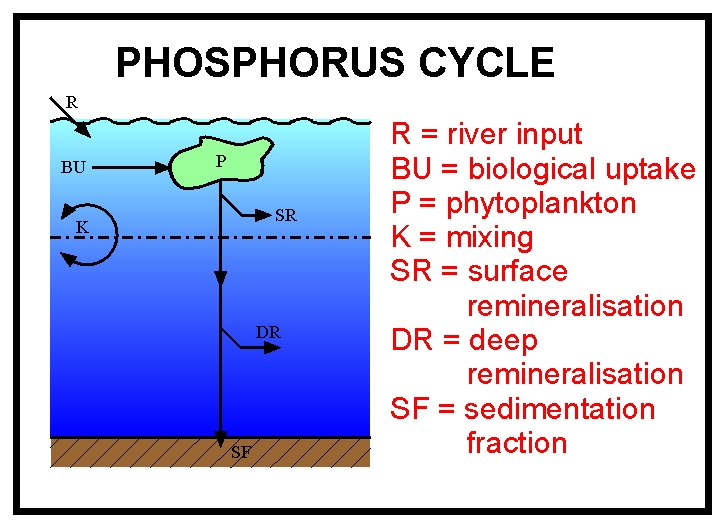
As with any model, simplification has both advantages and disadvantages. This article describes some of the phosphorus model cons.
Types of Models
In computer modelling there is a continuum between two caricature classes of models:
- conceptual-type models that aim to simplify a system down to include only its most important elements, in particular those that govern its behaviour
- simulation-type models that are highly detailed and try whenever possible to avoid making assumptions about what is important; instead they try to include as much detail as possible in the expectation that nothing important will be omitted
By simplifying to only the most important fluxes and state variables, this model is very much a conceptual-type model.
Disadvantages
Potential weaknesses of a conceptual approach include the likelihood of omitting something important. Every assumption runs the risk of being incorrect in an important way and thereby divorcing the model results from reality. It only takes one unreasonable assumption or omission, if it relates to a key part of the system, to invalidate the model's results.
Some major simplifications made in the phosphorus model are as follows:
- Horizontal variations are completely ignored. The model is unable to simulate differences between different ocean basins, between high and low latitudes, or between deep and shallow water environments. The model is therefore suitable only for calculating average global responses.
- Vertical variations can only be captured in an approximate way due to only two boxes in the vertical.
- Only the major fluxes are included. Fluxes that are deemed to be of lesser importance, such as the delivery of phosphorus to the surface ocean within dust, are not included.
- The representation of biology is extremely simplified. Limitation of growth rate due to light, temperature and other nutrients (for instance nitrogen, silicon and iron) are not included at all in the model, despite plentiful evidence that they are important at various times and places in the real ocean.
- Different types of phytoplankton are not distinguished in the model.
- There is no day-night cycle and no seasonal cycle in the model.
- Only inorganic phosphate is modelled. Dissolved organic phosphate (DOP) is not.
The motivation for all of these omissions is the expectation that their addition does not fundamentally change the behaviour of the model. It is predicted that adding these features would not greatly alter the model’s general long-term response to, for instance, changes in the amount of phosphorus in the ocean, or changes in the input rate of phosphate down rivers.
Other related pages
Phosphorus model overview
Phosphorus model details
Nitrogen-phosphorus model cons
Phosphorus model pros
Phosphorus model help
Phosphorus model worksheet
Refrences
The phosphorus cycle model has not been published separately, though it is a key component of the nitrogen-phosphorus and silicon-phosphorus models.
Tyrrell, T. (1999). The relative influences of nitrogen and phosphorus on oceanic primary production. Nature 400, 525–531.
External Links
Description of the chemical element phosphorus
Description of the phosphorus cycle